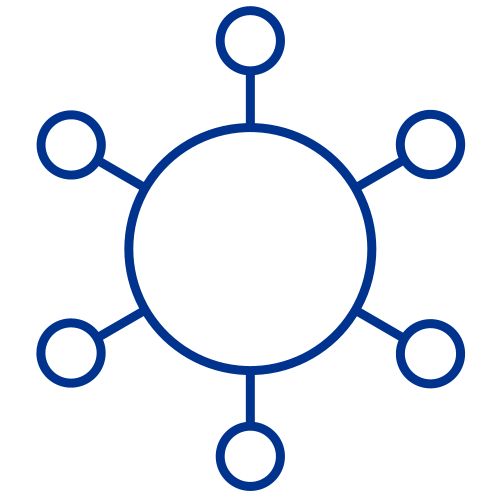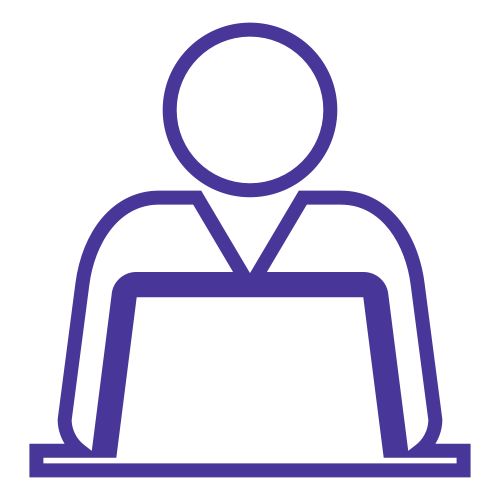Many companies invested heavily in the building blocks of more digitalized tax operating models in the past few years. It’s widely agreed that the pandemic’s pressures have accelerated this trend, as technology systems and processes served as lifelines for disrupted tax functions striving toward continuity and resilience.
From what we see among KPMG clients, many companies that had invested in digitalization were able to adapt more easily to managing tax compliance and risks despite the challenges. In recent months, many companies have started to take it further.
How will digitalization continue to transform tax functions as we head into recovery and beyond? This question was the topic of a panel discussion I recently led with colleagues across our series of Virtual Tax & Legal Summits, and in this post, I’d like to share some of the key points that I covered in that segment, alongside my colleagues, including Sean Bloodwell, Head of Global Compliance Management Services, KPMG in the US, Catherine Light, Director, Technology & Innovation, KPMG in Singapore, Rafiq Jalal, Partner, KPMG Tax Ignition, KPMG in the US, and Hamza Chishti, Senior Cloud Solutions Architect, Microsoft.
Digitalization gets a boost
At the highest level, the pre-pandemic push for digitalization was accelerated by the realities faced through the pandemic period, as were several other developments. Some of the most important trends for tax functions that got a big push in the past year included:
- Cash crunch: When the pandemic was declared, tax function budgets were already under the microscope, and the additional cash squeeze heightened pressure to do more with less, affecting decisions on investments in resources, people and technology.
- Finance transformation: Many tax operations have been disrupted by the broader transformation and centralization of finance functions, which have sometimes impeded the ability of tax to access data consistently for compliance in all jurisdictions and leverage the transformation’s benefits.
- Regulatory flux and new reporting demands: Tax reform, increasing tax transparency and other regulatory movements continued throughout 2020, and these trends could pick up pace once the pandemic is under control as tax authorities turn toward restoring government finances. Tax authorities from Asia to Africa and Latin America are asking for much more data than they did even 3 years ago, demanding detailed extractions or full downloads from accounting systems that can be hard to produce without a global platform that provides insight and visibility over a single source of data.
- Changing tax career paths: Tax professionals were becoming more transient before the pandemic, and tax functions were less able to rely on the built-in efficiency that come with the same people doing the same work for large parts of their careers. The move to remote working and the increasing mobility of workers and jobs is making these challenges more acute.
- Tax operating models (TOM): Ever more diverse TOM’s had been proliferating, including many lift-outs and large outsourcing arrangements that shifted employees from local operations to more centralized environments.
It’s hard to imagine how tax functions would have fared without applying emerging technology — empowering us to work remotely, to connect and collaborate virtually, and to access and process data from centralized systems.
What’s next?
As 2021 unfolds, we expect three emerging technological developments to drive digital transformation among tax and finance functions even further:
- Artificial intelligence (AI): After years of high expectations, we believe this year will finally see AI augmentation begin to make an impact. The adoption of AI engineering combined with the maturation of a distributed cloud means AI will likely be embedded in more development going forward.
- Relationships with computers: The way we interact with computers will shift further away from typing and more toward audio, video and voice. Computers will become increasingly adept at reading our emotions and providing content accordingly.
- Mega vendors: The really big cloud and software shops are creating new possibilities with new tools that tax professionals can use as business developers to design solutions quickly and cheaply.
Looking beyond 2021, it seems the next 3 to 5 years will likely see the rise of quantum, neuromorphic and other non-traditional computing methods, with self-learning leading to even smarter systems. Much of what we do may be either automated or augmented, and tax teams will need to integrate new skills and shift the focus of their work.
How will all this unfold? Many tax functions may continue to transform along this trajectory:

Global platforms – Global cloud platforms are emerging that we can all use to access and share data, setting the stage for more logical flows to solve problems and craft smart solutions. As experience during the pandemic has shown, cloud-based technology stacks are allowing many of us to act cohesively across geographies and tax processes.

Data maturity — Until now, tax people have spent up to 70 percent of their time on data-related issues — finding it, reconciling it or converting it to a usable tax reporting format. We will soon get much better at leveraging data in real time through standardized processes driven by common data models that enable end-to-end process integration and automation.

TOM and skills reboot — As tax people improve their skills and lean into computers, we expect to see radical changes in operating models that feature location independence, unbundling, hyper-automation, evolved use of consultants and fundamental shifts in the composition of tax teams.

Analytics as a service (AaaS) — AaaS models will likely emerge as tech-enabled tax professionals plug into digital platforms and mature data repositories and become citizen business developers who create quicker, more automated analytics for actionable business decisions.

New digital experiences — A next phase will likely see tax teams begin to use business applications and tools to build slick new digital experiences for themselves and their business partners, transforming how we manage data and deal with matters day to day. This could involve, for example, fully augmented work, extended reality and personal enhancements delivered through emerging mobile, AI, augmented and virtual reality, and other advanced computing capabilities.
While the pandemic continues to take a toll on people, businesses and communities worldwide, there is cause for optimism for the years ahead. Throughout history, times of stress have been met with surges in innovation. As people have set their minds to solving the current situation’s challenges, we have every reason to believe that this accelerated digital transformation is laying the foundation for great times ahead.



